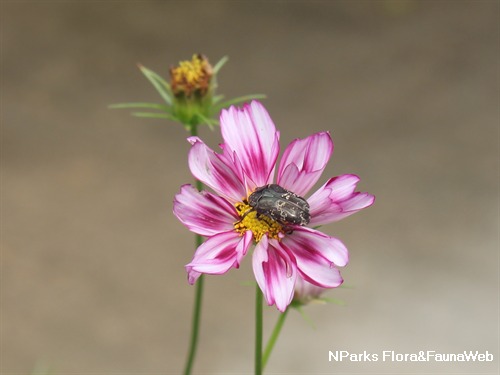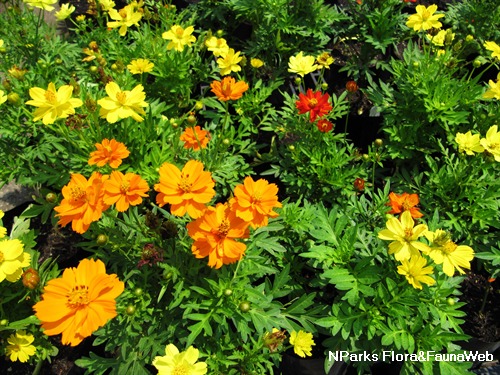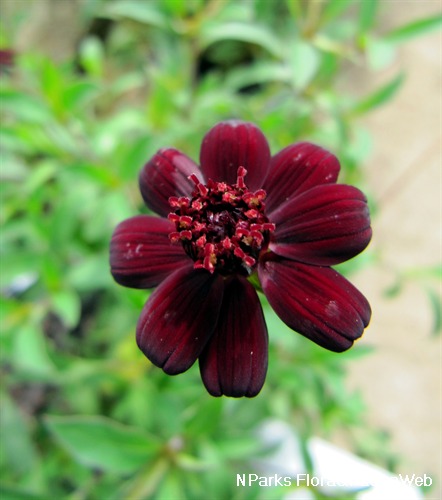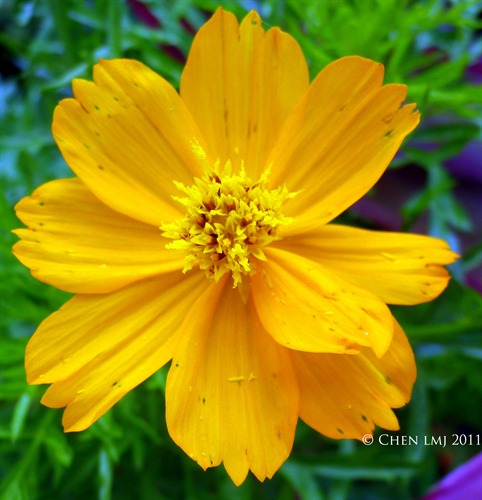
Back
Cosmos sulphureus Cav.
| Family Name: | Asteraceae (Compositae) |
| Synonyms: | Bidens artemisiifolia (Jacq.) Kuntze, Bidens artemisiifolia Kuntze f. grandiflora, Bidens artemisiifolia Kuntze subsp. intermedia, Bidens artemisiifolia Kuntze f. parviflora, Bidens artemisiifolia Kuntze f. rubra, Bidens sulfurea (Cav.) Sch.Bip., Bidens suphurea (Cav.) Sch.Bip., Coreopsis artemisifolia Sessé & Moc., Coreopsis artemiisfolia Jacq., Cosmos artemisiifolius (Jacq.) M.R.Almeida, Cosmos aurantiacus Klatt, Cosmos sulphureus Sherff var. exaristatus, Cosmos sulphureus Sherff var. hirsuticaulis, Bidens artemisiifolia Kuntze var. rubra |
| Common Name: | Yellow Cosmos, Klondike Cosmos, Orange Cosmos, Sulphur Cosmos, Jarak Bunting, Kosmos Kuning, 硫磺菊, 黄秋英 |
Name
Classifications and Characteristics
| Plant Division | Angiosperms (Flowering Seed Plants) (Dicotyledon) |
|---|---|
| Plant Growth Form | Herbaceous Plant |
| Lifespan (in Singapore) | Annual |
| Plant Shape | Shrubby |
| Maximum Height | 2 |
Biogeography
| Native Distribution | Mexico; naturalized in many parts of the Americas and Africa. |
|---|---|
| Native Habitat | Terrestrial |
| Preferred Climate Zone | Desert / Arid |
| Local Conservation Status | Non-native |
Description and Ethnobotany
| Growth Form | It is an herbaceous annual that grows to 2 m in height. |
|---|---|
| Foliage | Its leaves are compound, each leaflet is lance-shaped, deeply lobed into linear, narrow sections. The dark green leaves measures to 30 cm long. |
| Flowers | Its flowers are daisy-like, petals (ray florets) are rich orange to pale reddish yellow in colour. Flowers are long lasting, measuring 5 cm in diameter held by a long flower stalk of 10 – 20 cm long. |
| Fruit | Its fruits are produced as achenes, dry capsule fruits that do not spilt upon maturity. |
| Cultivation | It grows well under moderately fertile, moist soil with good drainage. Rich fertile soil may induce fast growth which lead to the plants bending over when they grow too tall. Taller cultivars may require stalking to ensure the plant remains upright. Deadheading (removal of spent flower heads) can promote more flowers. |
| Etymology | Its genus, Cosmos derives from the Greek word, kosmos meaning beautiful while the species epithet, sulphureus refers to the sulfur-yellow flowers. |
| Ethnobotanical Uses | Edible Plant Parts : Edible Flowers Food (Fruit or Vegetable): Young leaves and stems are eaten in some parts of Asia Others: A yellow - orange dye can be extracted from the flowers and used to dye cloth/ wool. |
Landscaping Features
| Desirable Plant Features | Ornamental Flowers, Ornamental Foliage |
|---|---|
| Landscape Uses | Parks & Gardens, Small Gardens, Flowerbed / Border, Container Planting |
| Thematic Landscaping | Golden Garden, Butterfly Garden |
Fauna, Pollination and Dispersal
| Pollination Method(s) | Biotic (Fauna) |
|---|
Plant Care and Propagation
| Light Preference | Full Sun |
|---|---|
| Water Preference | Lots of Water, Moderate Water |
| Plant Growth Rate | Fast |
| Rootzone Tolerance | Well-Drained Soils, Poor Infertile Soils, Easy to Grow |
| Pruning | Prune plant to desired height if growing it in containers or in small places |
| Pest(s) | Chewing Insects, Sucking Insects |
| Propagation Method | Seed |
Foliar
| Foliage Retention | Evergreen |
|---|---|
| Mature Foliage Colour(s) | Green, Green - Light Green |
| Mature Foliage Texture(s) | Smooth |
| Prominent Young Flush Colour(s) | Green |
| Young Flush Texture(s) | Smooth |
| Foliar Type | Compound (Tripinnate) |
| Foliar Attachment to Stem | Petiolate |
| Foliar Shape(s) | Non-Palm Foliage |
| Foliar Venation | Pinnate / Net |
| Foliar Margin | Pinnately Lobed / Pinnatifid |
Floral (Angiosperm)
| Flower & Plant Sexuality | Bisexual Flowers |
| Flower Colour(s) | Orange, Yellow / Golden |
|---|---|
| Flower Texture(s) | Smooth |
| Flower Grouping | Cluster / Inflorescence |
| Flower Location | Terminal |
| Flower Symmetry | Radial |
| Inflorescence Type | Compound Head / Capitulum |
Fruit, Seed and Spore
| Fruit Classification | Multiple Fruit |
|---|---|
| Fruit Type | Indehiscent Dry Fruit |
Image Repository
Others
| Master ID | 29554 |
|---|---|
| Species ID | 3863 |
| Flora Disclaimer | The information in this website has been compiled from reliable sources, such as reference works on medicinal plants. It is not a substitute for medical advice or treatment and NParks does not purport to provide any medical advice. Readers should always consult his/her physician before using or consuming a plant for medicinal purposes. |

.jpg)
.jpg)
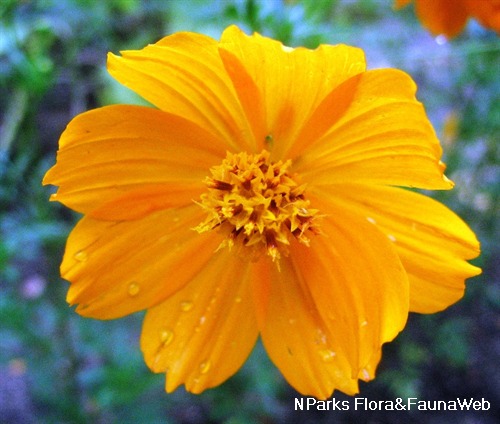
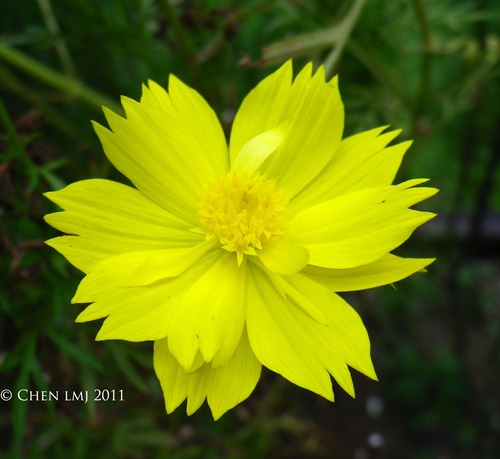
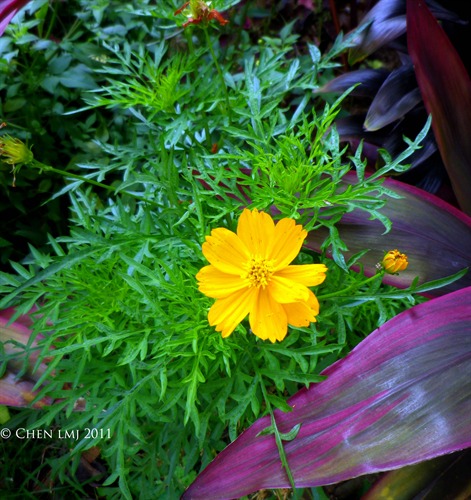
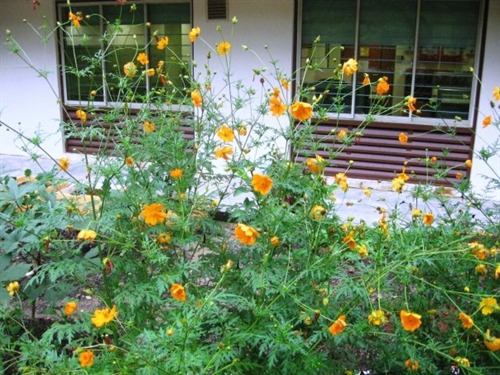
.jpg)
